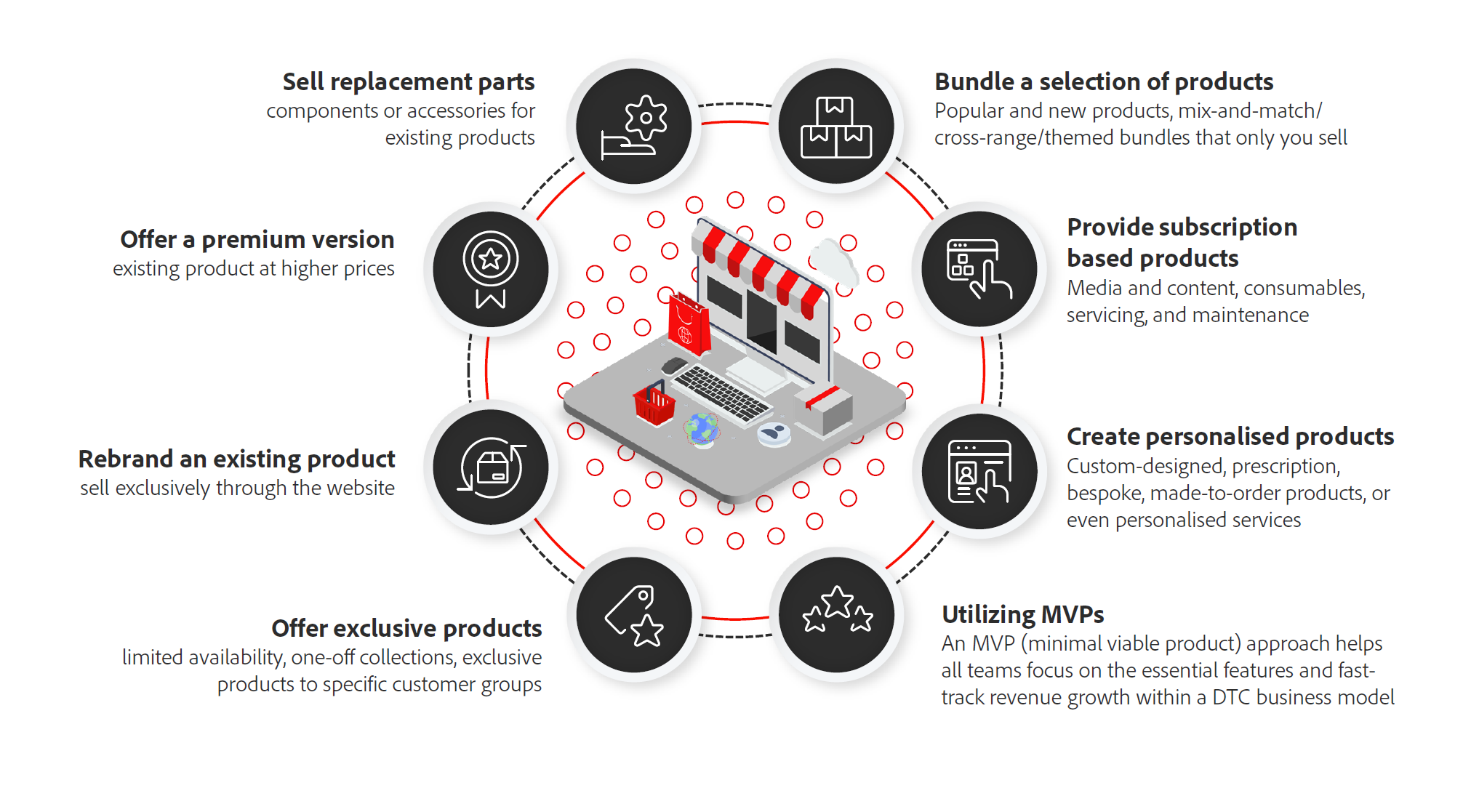
Scott Rigby, Chief Technology Advisor & Principal Product Manager, Adobe
Business-to-business (B2B) organizations are beginning to see the advantages of a direct-to-consumer (DTC) eCommerce strategy. The benefit of selling directly to consumers and bypassing third-party retailers is an opportunity that an unprecedented number of organizations are adopting. With eCommerce booming in Thailand, benefits of a DTC model include revenue growth by opening up a new selling channel and gaining deeper customer insights by collecting data.
With many confined to their homes in the past 18 months, eCommerce engagement soared like never before. Conversely, many had to struggle in the absence of their traditional bricks and mortar channels. This dramatic shift looks set to alter behavior across companies, customers, and the number of sales DTC accounts for in the coming years.
However, at Adobe, we continue to see B2B organizations experiencing major growth pains on the path towards launching a DTC eCommerce strategy. Despite many B2B organizations being well established in their existing models, the dynamic DTC landscape is uncharted territory. These organizations now face the same challenges all brands face online – standing out in a highly competitive and saturated environment. These are five factors which organizations must take into consideration.
(1) Build a well-defined business case for DTC ecommerce
This will help address the outputs and the investments required. It must also outline what the perceived benefits to the organization are. When the case to adopt a DTC strategy isn’t well-defined, there will be a lack of understanding of what is needed for success, and what the end goal is.
This business case should create a vision for the project that demonstrates the organizational benefit and how the solution can continue to evolve once deployed, with a platform innovation roadmap. This should outline future investments which will be required beyond the initial development or ‘phase one’ rollout.
(2) Cultivate a unique product and service offering with growth potential
Simply offering the same products and services you already have available through alternative partners and channels won’t be enough to drive long-term success. The target should be to create a product and platform with the capacity to evolve.
In today’s undoubtedly competitive eCommerce market, organizations that evolve with their customers stand the best chance of capturing market share. As eCommerce customer demands and demographics change, so must the products and services DTC organizations offer them. Organizations that cultivate unique offerings stand out from their competitors. Consider the following options:

(3) Steer clear of channel conflicts with a solid pricing and promotion strategy
Channel conflict occurs when the product’s manufacturer ‘steps on the toes’ of their retail partners. Selling products directly to consumers effectively disintermediates their channel partners. Channel conflict undoubtedly sours partner relationships, causing significant and harmful reputational damage and potentially ruining the partnership permanently.
By offering customers uniquely priced products and services, promoted with an alternative approach, an organization alleviates potential partner conflicts. Cutting out intermediaries with a DTC approach also helps organizations reduce costs. Furthermore, they can now invest cost savings back into fine-tuning their offering to suit evolving customer demands.
(4) Make real-time inventory accuracy a top business priority
A well-architected inventory solution is crucial to the success of eCommerce platform selling DTC. Organizations should assess existing systems’ ability to be tightly integrated, resulting in solutions that provide the business with real-time inventory visibility and accuracy. For example, stock availability on the eCommerce platform should not conflict with stock preassigned to retail partners or large-scale orders.
Where system integration capability is restricted due to legacy systems or isolated technology, an analysis of additional system upgrades should be undertaken to understand the broader implications of gaining the level of inventory control required.
Where system integration capability is restricted due to legacy systems or isolated technology, an analysis of additional system upgrades should be undertaken to understand the broader implications of gaining the level of inventory control required.
(5) Prioritize the customer experience and demonstrate the benefit of buying direct
For an organization to be successful at DTC eCommerce, the customer experience should be front and centre. By conveying how their products benefit customers as well as the case for customers buying directly to cut out the middleman strengthens this case. Organizations must clearly convey how their products benefit customers, and why buying directly is beneficial for them.
Furthermore, the data and insights that eCommerce platforms provide are compelling. These metrics that might have been unavailable to brands before are now easily accessible, allowing businesses to make data-driven decisions.
Platform availability is 24-7, and as such, DTC demands organizations to get serious about customer service of a quality that does not fluctuate around the clock.
Besides improving customer service, businesses should make it clear that buying directly from brands means a better experience for customers, especially in the areas of faults or returns. Developing a more transparent line of communication is imperative to ensure that experience is not jeopardized.
(6) Create a sustainable customer acquisition strategy that will evolve with the business
Part of being successful at DTC is understanding the importance of customer acquisition. Whereas product and technology see significant investment, very little is seemingly dedicated to customer acquisition strategy. This is a common challenge amongst organizations. Due to not allocating from the onset, there often isn’t any budget left over at the tail end of a project.
Retail partners, networks and distributors have huge budgets dedicated to marketing and promotion on a scale that is difficult to compete with. Not only does an organization require an entire dedicated strategy, but the business case should also factor in upfront and ongoing budget requirements for customer acquisition. Leaving customer acquisition strategy out of the overall business plan could ruin any potential for future success in a DTC strategy.
With everyone still trying to work out the new normal, one thing remains clear – DTC is the model an increasing number of businesses are taking up. This approach could safeguard the short-term future and evolve into a long-term strategy. Hence, with all these factors carefully considered, the move to DTC can become progressive steps in growing your business.
